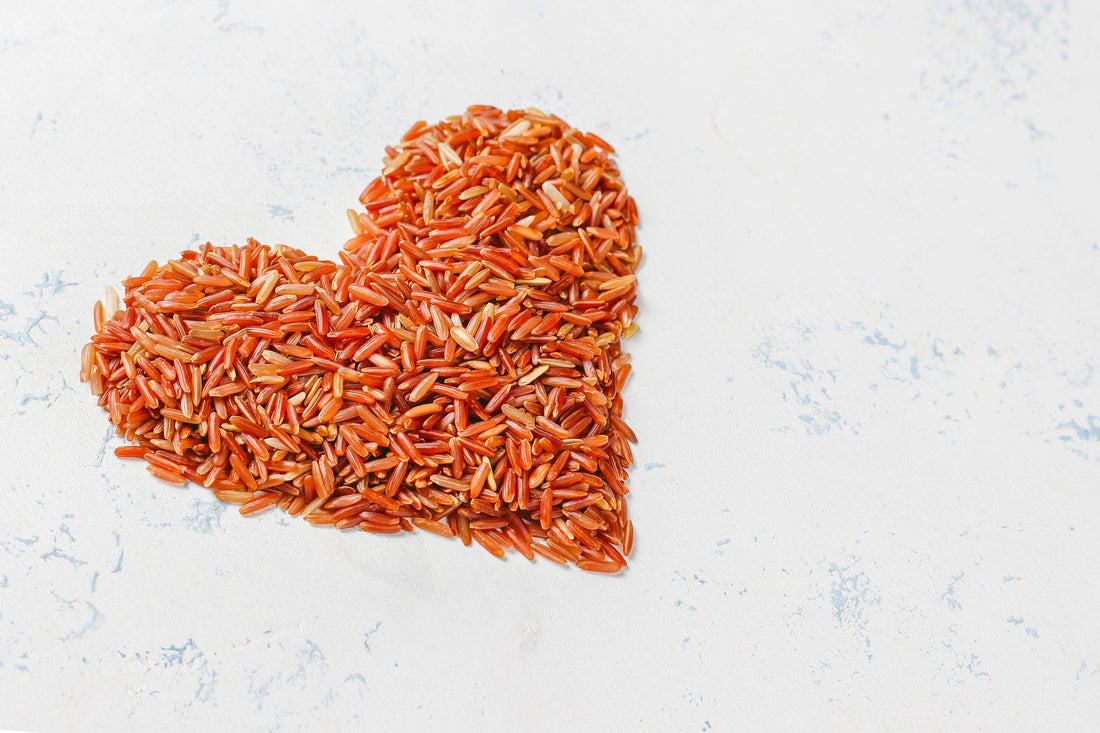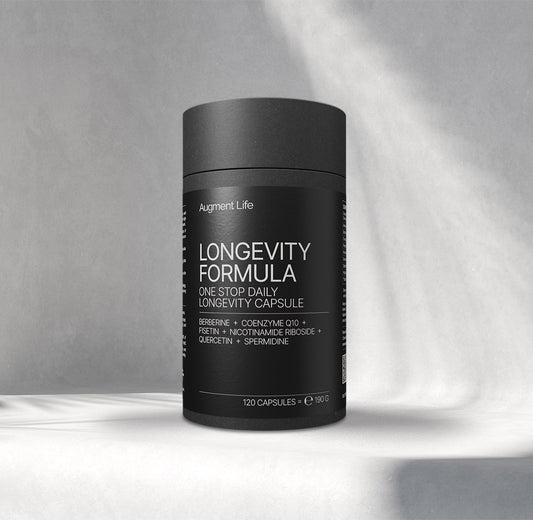Red yeast rice is an ingredient that has been used traditionally for hundreds of years in Chinese medicine and is now well known for its ability to naturally lower cholesterol levels.
It is produced by a fermentation process using rice and a specific strain of yeast (Monascus purpureus) that generates compounds known as monacolins.1 Monacolin K, which occurs in red yeast rice, is the same active ingredient as found in prescription statins, the group of medications that lower cholesterol.
Nowadays, many people are interested in red yeast rice for its all-natural origin and because of its similarity in effects to statins. If someone wants to manage their cholesterol levels without a prescription, using red yeast rice would seem to be a good option. But still, it is very important to use red yeast rice correctly for effectiveness and safety.
In this article, we’ll provide dosing guidance based on clinical research, and explain how these doses were developed. Additionally, important points to consider for safe use will be covered.
Keep reading to know more.
Dosage
Red yeast rice supplements are widely available in the market as capsule or tablet form.
Most studies and pharmacological companies use a standard of 600 mg twice daily among adults.2-4 One study looked at how red yeast rice affected high cholesterol patients. In this double-blind placebo-controlled trial, participants were given 1,200 mg per day for 12 weeks. Results showed that there was significant reduction in LDL cholesterol levels confirming that this dosage helps the supplement work effectively.3
Another research tried to determine long-term safety and efficacy of red yeast rice. For 24 weeks, participants received 2,400 mg/day divided into two doses of 1,200 mg each. The trial demonstrated not only substantial decrease in LDL cholesterol but also an acceptable safety profile with little adverse effects.4
Most major supplement brands on the market generally recommend taking between 1,200–2,400 mg daily, divided into two to three doses. The suggested dosage is based on clinical trials that have shown red yeast rice to be effective and safe for controlling cholesterol levels. A study found that adding red yeast rice at 1,200-2,400 mg/day reduced LDL cholesterol levels among participants in 12 weeks significantly; especially people who received the higher end of this range. Additionally, researchers noted that dividing the total daily dose in two or three small doses helped sustain more stable blood levels of active compounds, thus maximizing lipid-lowering effect while minimizing possible side effects.5
However, each brand still has different formulations of their supplements so it is highly recommended to speak with a healthcare provider as well as refer to the dosage instructions for proper dosing instructions.
You can read more about red yeast rice, its benefits, and side effects in our article, “Why Should You Take Red Yeast Rice?”
Contraindications
Red yeast rice is contraindicated with the following:6
- Alcohol - The combination of alcohol and red yeast rice may increase the risk of liver damage. Avoid alcohol consumption when taking this supplement.
- Immunosuppressive Drugs - Immunosuppressors especially those that contain Cyclosprorine as it may increase the risk for myopathy or muscle diseases that control voluntary movements of the body.7
- Fungal Infection Drugs - Taking red yeast rice with these types of drugs, such as erythromycin was found to increase the risk of harmful red yeast rice side effects.
- Statins - Because red yeast rice has been found to have the same effect as statins (cholesterol-lowering drugs), taking it with other statins might increase the risk of harmful side effects.
- Hepatotoxic drugs, herbs and supplements - Red yeast rice might contain monacolin K, which can cause liver damage in some people. Taking red yeast rice with these types of drugs, herbs and supplements could increase the risk of liver damage.
- Niacin or Vitamin B3 - Taking this supplement with high amounts of Vitamin B3 may also increase the risk of myopathy.
- Grapefruit - Grapefruit juice can significantly raise blood levels and increase the risk of side effects such as liver damage.8
- St. John’s Wort - This product commonly used for depression can alter and lower the effects of red yeast rice, so taking them both should be avoided.3
References:
- Red yeast rice. (n.d.). NCCIH. https://www.nccih.nih.gov/health/red-yeast-rice.
- Indication-specific dosing for (red yeast rice), frequency-based adverse effects, comprehensive interactions, contraindications, pregnancy & lactation schedules, and cost information. (n.d.). https://reference.medscape.com/drug/angkak-benikoji-red-yeast-rice-344601.
- Becker, D. J., Gordon, R. Y., Halbert, S. C., French, B., Morris, P. B., & Rader, D. J. (2009). Red yeast rice for dyslipidemia in statin-intolerant patients: a randomized trial. Annals of internal medicine, 150(12), 830–W149. https://doi.org/10.7326/0003-4819-150-12-200906160-00006.
- Heber, D., Yip, I., Ashley, J. M., Elashoff, D. A., Elashoff, R. M., & Go, V. L. (1999). Cholesterol-lowering effects of a proprietary Chinese red-yeast-rice dietary supplement. The American journal of clinical nutrition, 69(2), 231–236. https://doi.org/10.1093/ajcn/69.2.231.
- Gerards, M. C., Terlou, R. J., Yu, H., Koks, C. H., & Gerdes, V. E. (2015). Traditional Chinese lipid-lowering agent red yeast rice results in significant LDL reduction but safety is uncertain - a systematic review and meta-analysis. Atherosclerosis, 240(2), 415–423. https://doi.org/10.1016/j.atherosclerosis.2015.04.004.
- Team, N. (2023, August 17). Red yeast rice | NCH Healthcare System. NCH Healthcare System. https://nchmd.org/health-library/articles/art-20363074/.
- Nagy, H. (2023, August 14). Myopathy. StatPearls - NCBI Bookshelf. https://www.ncbi.nlm.nih.gov/books/NBK562290/.
- Red yeast rice and Alcohol/Food Interactions. (n.d.). Drugs.com. https://www.drugs.com/food-interactions/red-yeast-rice.html#:~:text=Grapefruit%20juice%20can%20significantly%20increase,breakdown%20of%20skeletal%20muscle%20tissue.





